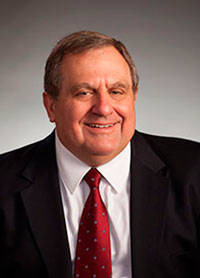Bridges shouldn’t have to sink to be replaced. However, at times that’s what it takes. Too often new projects succumb to years of fighting among interest groups and endless political bickering.
In 2013, opposition killed Columbia Crossings project which was formed to construct a replacement I-5 bridge across the Columbia River connecting Vancouver and Portland.
We all want more roads and bridges as long as they are in the other persons’ neighborhood and someone else pays. But that attitude is not realistic as our population expands and more demands are put on our transportation system. Case in point: Seattle-based Amazon alone doubled its truck fleet to 20,000 in just a year, GeekWire.com reported.
The Hood Canal Bridge connecting the Olympic and Kitsap peninsulas is a good example of how fast bridge reconstruction can be completed.
It was originally completed in 1961. It took years to build, but in less than a day wind gusts estimated at 120 mph sank it on Feb. 13, 1979. The ensuing debate was not over whether it should be replaced, but how long would it take. As a result, reconstruction was completed in 1982.
Washington houses bridges which are costly to build, maintain and replace. Our beautiful mountains, lakes and major waterways (Columbia River and Puget Sound) drive up construction costs and require added time to plan, engineer and build. If you have driven I-90 over Snoqualmie Pass in the last decade, you get the picture.
The need for new roads and bridges is growing as our population climbs. Washington and Oregon traffic is increasingly gridlocked along the I-5 corridor. The Oregon Dept. of Transportation reported just over 125,000 vehicles cross the I-5 Bridge over the Columbia River in 2006. In 2018, it was 136,000.
The I-5 Bridge’s two spans opened in 1917 and 1958. “The bridge started reaching capacity during weekday peak hours nearly 30 years ago, within a decade of the December 1982 opening of the Interstate 205 Bridge,” Columbian reporter Jeffrey Mize wrote.
Replacement discussions formally started in 2005 by governors Christine Gregoire, Washington, and Ted Kulongoski, Oregon; however, Columbia Crossings stalled in 2013.
It was reinvigorated recently when governors Kate Brown, Oregon, and Jay Inslee, Washington, signed memorandum to restart the planning. Hopefully, within five years, construction will be well underway.
Getting agreement will not be easy. “Lurking beneath the veneer of tranquility are the same issues that polarized the region a decade ago: opposition to tolling, hostility toward light rail, support for a third Columbia River bridge, concerns about climate change, and a sneaking suspicion this $3 billion-plus megaproject will cost too much and deliver too little,” Mize wrote.
Building bridges is never easy and comes with political risk. Gov. Albert Rosellini, Seattle Democrat who served from 1956-64, staked his political career on four major bridges. Opposition to tolls helped sink Rosellini’s bid for a third term as governor.
Rosellini’s bridge plan called for tolls. Without tolls to guarantee bonds, the projects would not happen. “His role in moving the Evergreen floating bridge off a political impasse was critical,” said former Seattle Mayor Wes Uhlman, who served in the legislature when Rosellini was governor.
In the 1950s and 60s the preponderance of the highway and bridge funding came from Washington, D.C. However, when the interstate system was deemed complete in 1962, it was turned over to the states to maintain and expand. Realistically, it is unlikely there will be federal funding to provide the lion’s share of the money again. So tolling will be reconsidered.
The bottom line is just as there is an urgency to rebuilding a sunken bridge; there needs to be an urgency to the I-5 replacement bridge.
Don C. Brunell is a business analyst, writer and columnist. He retired as president of the Association of Washington Business, the state’s oldest and largest business organization, and now lives in Vancouver. He can be contacted at theBrunells@msn.com.


